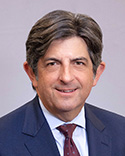Causation in personal injury actions, including product liability claims related to drugs and medical devices and toxic tort actions related to exposure to hazardous substances, must be proven within a reasonable degree of medical probability based upon competent expert testimony. That’s typically the plaintiff’s burden of proof. Do the defendants bear the same burden? In Kline v Zimmer, the California Court of Appeal recently held that, in challenging the plaintiff’s causation evidence, defense expert testimony should be held to a standard of “less than a reasonable medical probability.”[1]
Kline involved the plaintiff’s claim that the Durom Cup hip implant, manufactured by defendant Zimmer, Inc. and utilized in his first hip replacement surgery, was defective and caused him to require an additional surgery, which resulted in further injury. Evidence presented by the plaintiff at trial included an expert who testified to a reasonable medical probability that the Durom Cup’s defects caused the plaintiff to need the additional surgery, which resulted in changes in his muscles and soft tissues causing him chronic pain.[2]
Zimmer had offered to present expert testimony that the plaintiff’s injuries had possible alternative causes, such as arthritis and excess weight.[3] However, the trial court had excluded this evidence, as well as certain parts of the plaintiff’s expert testimony that was also not stated to a reasonable medical probability.[4] The exclusion left Zimmer with no expert testimony, while the plaintiff’s experts were permitted to testify.[5] The trial court relied on existing California personal injury law, which states that causation “must be proven within a reasonable medical probability based upon competent expert testimony.”[6] The jury returned a verdict in the plaintiff’s favor, and Zimmer appealed.
The Court of Appeal, reviewing the judgment de novo, found that in offering evidence that undermined the plaintiff’s expert’s testimony in an effort to demonstrate the plaintiff could not meet his burden of proof on causation, the defense expert was improperly excluded from testifying as to other possible causes of the plaintiff’s injury.[7] The appellate court agreed with Zimmer that the Ortho Pharmaceutical rule cannot apply to a party without the burden of proof.[8] That is, a defendant, when trying to show that the plaintiff has not met his burden, does not need to prove potential or possible alternative causes of injury to a reasonable medical probability.[9]
The court acknowledged that “[l]ess than a reasonable probability is a wide spectrum that begins at 50 percent likely and ends at impossible,”[10] and that all such testimony is not necessarily admissible. For example, opinions based on “assumed facts” without any support for the truth of those facts will properly be excluded.[11] Thus, trial courts continue to have discretion to determine the line between an opinion regarding a possible cause and mere speculation.[12]
Importantly, the court noted that not all defense expert testimony can be presented in this manner. For instance, when the defendant is trying to show that a third party is liable, the defendant’s causation experts will need to testify to a reasonable medical probability in order to meet the defendant’s burden of proof.[13]
Because the trial court’s ruling excluding Zimmer’s expert was a structural error, the Court of Appeal ordered a reversal without analysis of whether or not the error changed the result of the trial.[14]
With this decision, California now tracks states like Florida, Nevada, Wisconsin, Kentucky, New Hampshire, and Pennsylvania, which have similarly held defense expert testimony to this lower standard when offered to show plaintiffs cannot satisfy their burden of proof.[15]
References
[1] Gary Kline v. Zimmer Inc., No. B302544 (Cal. Ct. App. May 26, 2022) 2022 WL 1679539, slip op. at 5.
[2] Id., slip op. at 2.
[3] Id., slip op. at 5.
[4] Id., slip op. at 1.
[5] Id., slip op. at 2.
[6] Jones v. Ortho Pharmaceutical Corp. 163 Cal. App. 3d 396, 402 (1985).
[7] Kline, slip op. at 3.
[8] Id., slip op. at 3-4.
[9] Id., slip op. at 4.
[10] Id., slip op. at 5.
[11] Id.
[12] Id.
[13] Id., slip op. at 4.
[14] Id., slip op. at 7.
[15] R.J. Reynolds Tobacco Co. v. Mack , 92 So.3d 244, 248 (Fla.Dist.Ct.App. 2012) (challenging smoking as cause of laryngeal caner); Williams v. Eighth Judicial Dist. Court of Nev. 262 P.3d 360, 363 (Nev. 2011) (challenging drug manufacturer’s defective vials as cause of hepatitis C); Roy v. St. Lukes Medical Center, 741 N.W.2d 256, 259 (Wis.Ct.App. 2007) (challenging theory that radiologist negligently ignored signs that procedure was causing stent to dislodge); Sakler v. Anesthesiology Assocs. P.S.C., 50 S.W.3d 210, 213-214 (Ky.Ct.App. 2001) (possible alternative causes of patient’s injury in a medical malpractice case); Wilder v. Eberhart, 977 F.2d 673, 674-675 (1st Cir. 1992) (challenging stomach stapling surgery as cause of tear to esophagus) Kennedy v. Sell, 816 A.2d 1153, 1158 (Pa. Super., 2003)(challenging car accident as sole cause of shoulder injuries).








